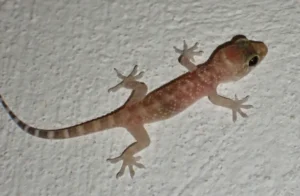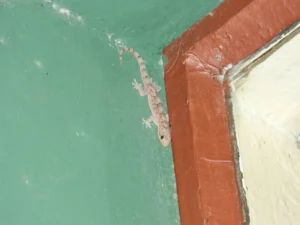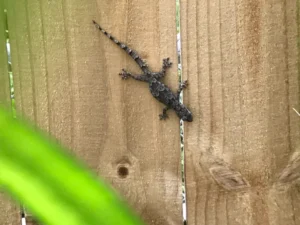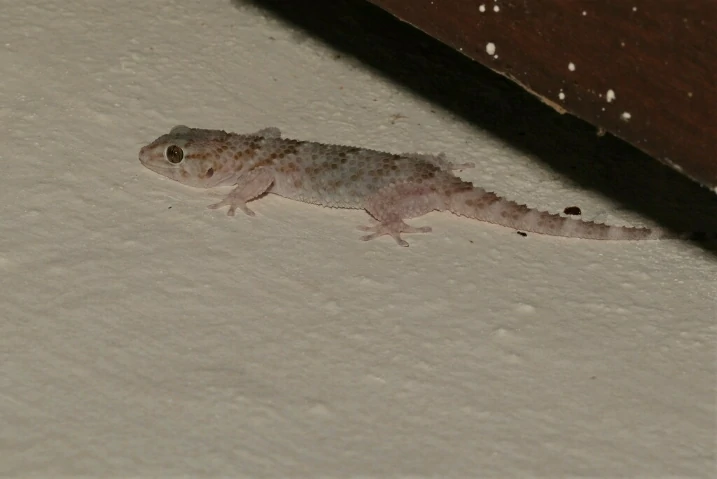You come home after a long day, check your security camera, and there it is again; a tiny gecko hanging out on the lens. It’s cute for about five seconds, then you realize the little guy keeps smudging the camera, setting off false alerts, or blocking the view right when you need it.
So how do you stop geckos from treating your security camera like their personal hangout, without hurting?
Keeping geckos off your security camera is about making the area less attractive and accessible. Trim nearby plants, reduce insects around the camera, use natural repellents, and adjust lighting. Small, consistent changes can protect your camera effectively.
Geckos are tiny, curious, and stubborn. They like high spots to hunt insects or just feel safe. Security cameras often give them the perfect perch, especially if bugs are hanging around.
The good news is, you don’t need chemicals or traps to handle it.
Why Geckos Like Security Cameras
Geckos hunt at night and love places with lots of insects. They also like warm, sheltered spots. So a camera under an eave, near a porch light, with a warm plastic cover becomes a mini buffet with a built-in perch.

The smooth lens and dome make climbing easy too.
Once you stop attracting bugs and make the camera less cozy, most geckos move on. They’re not out to annoy you, they just take what’s easy.
Move or Change the Light
This is the simplest fix. Most geckos come because bugs are drawn to your light.
Try this:
-
Swap bright white bulbs for warm, low-insect bulbs. Warm LEDs or sodium lights attract fewer bugs.
-
Move the light a few meters away from the camera if you can. Fewer bugs mean fewer geckos.
-
Set up an insect trap or baited light away from the camera as a decoy.
A small change in light color or position often cuts visits a lot. It’s easy, but it works.
Make a Small Barrier or Baffle
Geckos climb really well, but they aren’t superheroes. Changing the camera mount can make it harder for them to sit there.
Some ideas:
-
Add a shallow, angled plastic cone or baffle around the camera so they don’t have a flat spot to rest. Make sure it doesn’t block the view.
-
Wrap the pole or bracket with smooth PVC or PTFE tape. Slippery surfaces make it harder for their feet to grip.
-
Use a dome housing instead of a flat one. Rounded domes aren’t as inviting to geckos.

These are cheap, safe, and don’t hurt the geckos. They just make the camera less comfy.
Use Slick Surfaces Carefully
You can make surfaces slippery with PTFE tape, silicone tubing, or plumber tape around the mount.
Just remember:
-
Use non-toxic, weatherproof stuff. Don’t use sticky gels that can trap animals.
-
Avoid chemical sprays that can damage the camera. Test a small area first.
-
Treat the mount, not the lens. You want the housing slippery, not the camera’s optics.
A little PTFE strip or tubing works surprisingly well and is easy to replace.
Give Them Another Spot To Perch Away From the Camera
Sometimes the kindest trick is giving geckos another place to hang out. If your yard has a bug-covered wall, add a box or rough board with a light nearby.
It won’t stop all geckos, but it can distract many away from the camera. You’ll still see them, but your camera won’t be their playground.
Adjust Camera Angle and Housing
Changing the angle or height can help a lot. Geckos like ledges and sheltered corners.
Try:
-
Angle the camera down so geckos can’t see their reflection in the dome. Curiosity can draw them in.
-
Raise the camera a bit if wiring and looks allow. Even 20–30 centimeters can help.
-
Use smooth, hard-to-grip housings made for outdoor wildlife cameras.

Make sure you don’t block important areas. You want fewer perches without blind spots.
Tune the Software to Ignore Small Animals
If geckos still show up, camera software can help. Modern systems let you adjust motion sensitivity, set exclusion zones, or ignore small animals.
Do this:
-
Lower motion sensitivity or exclude the mount area.
-
Enable filters that focus on human shapes and ignore small animals.
-
Set alerts so you only get notified for sustained movement, not a single gecko tap.
This doesn’t remove geckos, but it keeps your phone from blowing up with false alerts.
Clean Up the Area and Reduce Bugs
Fewer bugs means fewer geckos. Remove standing water, clean gutters, cover drains, and keep trash bins closed.
Some tips:
-
Fix dripping taps and standing water. Mosquitoes and moths drop fast.
-
Keep BBQ and food areas clean so you’re not feeding bugs or geckos.
-
Trim plants near the camera. Less plant matter means fewer insects.

A little maintenance goes a long way. You’ll see fewer night visitors in weeks, not months.
What Not to Do
Avoid quick fixes that are cruel or ruin your camera:
-
Don’t use sticky traps near cameras, they can trap and hurt geckos.
-
Don’t spray toxic pesticides on the camera, it can kill animals and damage electronics.
-
Don’t glue or permanently change the camera housing, it could void your warranty.
Be practical and kind. Harsh measures usually backfire.
Quick Checklist You Can Try Tonight
-
Move or change porch light to a warm LED.
-
Add a conical baffle or smooth sleeve around the mount.
-
Adjust the camera angle down or higher.
-
Lower sensitivity or set exclusion zones.
-
Clean nearby plants and remove standing water.
Try one or two changes first and watch for a few nights. You’ll probably see fewer gecko visits quickly.
When to Call a Pro
If your camera is part of a serious security setup and geckos keep showing up, a professional can offer custom solutions: housings, tamperproof mounts, or better placement. They can suggest manufacturer-approved accessories that don’t void the warranty.
A local installer can test materials and angles for your exact camera, saving trial and error.
Keep Geckos Safe and Your Footage Clear
Geckos are harmless little yardmates. Most people want solutions that keep them safe and cameras working.
The best approach combines a few simple changes: move lights, cut bugs, add a slippery sleeve or angled baffle, and tweak motion detection.
A few small tweaks often solve the problem for good. You get clearer footage, fewer false alerts, and geckos keep hunting just a few meters away from your camera.
Conclusion
So how do you keep geckos off your security camera? Make the area less attractive and harder to cling to, then adjust the camera so small animals don’t trigger alerts.
Switch the light, add a smooth or angled baffle, wrap the mount in safe slick material, adjust the angle, and clean up insect attractants.
If false alerts continue, use software exclusion zones or call a pro for a custom mount. Do this and your camera stops being a gecko perch.
You’ll still see them in the yard, but your footage will be clear, alerts useful, and the problem solved in a practical, kind way.
Hi, my name is Ezra Mushala, i have been interested animals all my life. I am the main author and editor here at snakeinformer.com.

